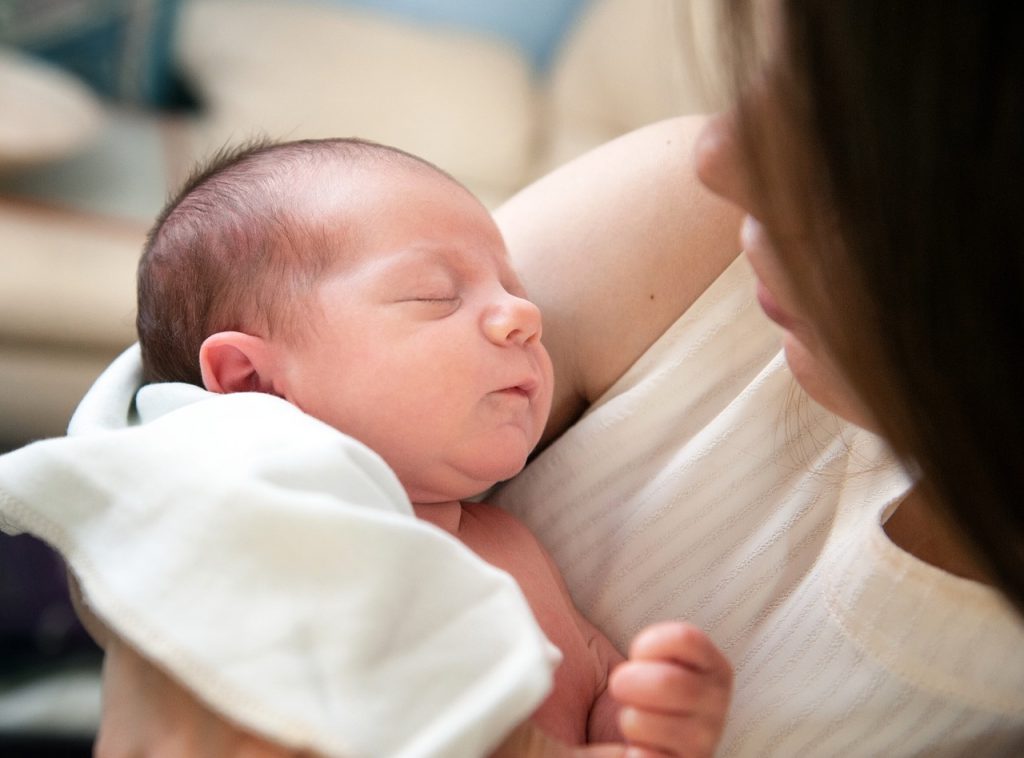The Ultimate Guide To Postpartum Fever.

Introduction
Postpartum Fever is the rise in body temperature of more than 101.6 degrees F or 38.7 degrees C within 24 hours of childbirth.
As per WHO, 70 women per 1000 live births have infections that need hospital admission.
This blog post is the ultimate way to overcome your overwhelming fever after delivery.
Julia Roberts is one of the great actresses and she mentioned that,
“A fever is an expression of inner rage.”
For instance, medicine also considers fever as a cardinal sign of inflammation in your body.
Inflammation is the body’s defense mechanism in fighting against the infection.
Similarly, we have experienced at least a few episodes of fever in our lifetime.
This one is different and worth knowing.
What does the Postpartum Period Mean?
The phase after childbirth is the postpartum period and extends up to six weeks after the delivery.
This period is stressful sometimes as you accept the new title as “mother” and its responsibilities.
It is a crucial period as you are prone to infections, and this causes fever in you.
This intense period is immensely challenging itself, and fever to top it can be pretty taxing.
Puerperium and Puerperal Period are the other terms used for the postpartum period.
What is Postpartum Fever?
Postpartum fever is the rise in body temperature after childbirth.
Please do not neglect the fever after delivery and chills, confusing it with a viral fever. Consult your obstetrician immediately.
The body temperature above 38º C ( 100.4º F) is significant.

What are the causes and symptoms of Postpartum fever?
There are various reasons to develop a postnatal fever.
Your obstetrician will investigate and conclude the cause of the fever.
As a general rule, infection in any part of your body will cause a rise in the basal body temperature.
Fever is a way our body defends against the organisms invading us.
Some of the common causes of fever after delivery are:
1. Urinary Tract Infection
It is the most common infection in a postpartum woman.
Sometimes vaginal delivery can cause nerve damage or trauma to a part of the urethra.
The prolonged urinary retention causes the stasis of urine. As a result, the bacteria will get an opportunity to enter the urinary system through the urethra.
The urethra is a tube that allows the passage of urine from the bladder to the outside of the body.
The length of the female urethra is around 5 cm. Such a short length makes it an easier path for organisms to access the urinary tract.
Thereby, women are more susceptible to urinary tract-related infections.
E. coli bacteria often causes it.
Symptoms:
- Fever
- Painful urination
- Burning urination
- Pain in the tummy
- Pain in the lower back
- Foul-smelling urine
- Change in the color of urine
- Bloody urine in severe cases
2. Respiratory Tract Infection
The respiratory tract infection can be seen after childbirth.
The pregnancy causes a decrease in lung capacity and predisposes them to pneumonia. Pneumonia can continue after delivery and cause fever.
The hormonal changes and the disturbed flow in the veins induces clot formation as a preventive mechanism to prevent excess blood loss after the delivery.
The clots in the vein travel to the lungs and cause a pulmonary embolism.
Pulmonary embolism is known to cause high-grade fever in patients.
Symptoms:
- Fever
- Difficulty breathing
- Dizziness
- Discolored skin
- Leg pain
- Increased sweating.
- Chest Pain
- Chest tightness
- Cough
3. Wound / Suture / Incision infection
The cesarean section or episiotomy stitch can get infected. The infection induces fever around 36 hours after the surgery.
Severe pus at the site opens the cut.
More common in obese, diabetic, or immunosuppressed women.
Symptoms:
- Fever
- Warmth and redness around the area of operation
- Painful stitches
- Stinky pus from the cut
4. Septic Pelvic Vein Thrombophlebitis
Prolonged infection of the pelvis will cause damage to the walls of the veins located in the pelvis. This form of damage leads to clot formation and thrombophlebitis.
Septic thrombophlebitis is common after cesarean delivery.
The postpartum infection is more common in the septic thrombophlebitis
Hormonal changes can cause clots. The clots move to the lower limbs, and deep vein thrombosis develops.
Symptoms:
- Fever
- Pain in the lower part of the tummy
- Stinky vaginal discharge
- Nausea and vomiting
5. Uterine Infection
Endometritis is an infection of the uterus.
There are bacterias present in the lower part of the vagina. These bacterias will move upwards to the uterus and cause infection.
Symptoms:
- Fever
- Pain in the lower part of a tummy
- Stinky vaginal discharge
- Tiredness
6. Mastitis
It is the infection of the breast tissue. Breast tissue is the mass that gives shape to your breast.
Mastitis is more common in the first pregnancy.
It is painful and usually develops in the first two weeks after starting breastfeeding.
Single breast is involved commonly.
The bacteria reach the breast tissue through the fissures and abrasions on the nipples.
Mastitis can leads to the accumulation of pus inside the breast, if neglected. The accumulated pus forms breast abscesses.
Symptoms:
- Fever
- Breast warm, painful, and hard to touch
- Swelling present
- Painful breastfeeding
- Tiredness
- Cracked nipples
7. Chorioamnionitis
In premature rupture of membrane, the fetal membranes will rupture before the onset of labor.
The rupture gives access for the organisms present in the vagina to ascends into the uterus.
The bacteria infect the placenta and amniotic fluid, causing chorioamnionitis.
Nutrition and oxygen supply to the baby gets disrupted, affecting the baby’s growth inside your tummy.
The infection will continue to present during the postpartum period.
Symptoms:
- Fever
- Stinky vaginal discharge
- Severe pain in the tummy

List of risk factors for Postpartum fever
- Cesarean section delivery
- Prolonged labor
- Obesity
- Diabetes
- Nipple fissure
- Breast engorgement
- Immunosuppression
- Urinary catheter use
How to manage Postpartum fever?
Never neglect a raise in body temperature after delivery.
Consult your obstetrician at the earliest. They will run a thorough investigation to rule out the possible causes for the fever.
Postpartum fever is due to an underlying condition. Avoiding the visit to your doctor will lead to complications in the involved organ.
Conclusion
This fluff-free guide shares information with regard to fever after delivery.
If you have a fever after delivery, consult your obstetrician at the earliest. It is the mantra.
Jagath | 4th Jun 21
Hi
Liked you post
cardinalacademy.info | 6th Jun 21
Thank you!